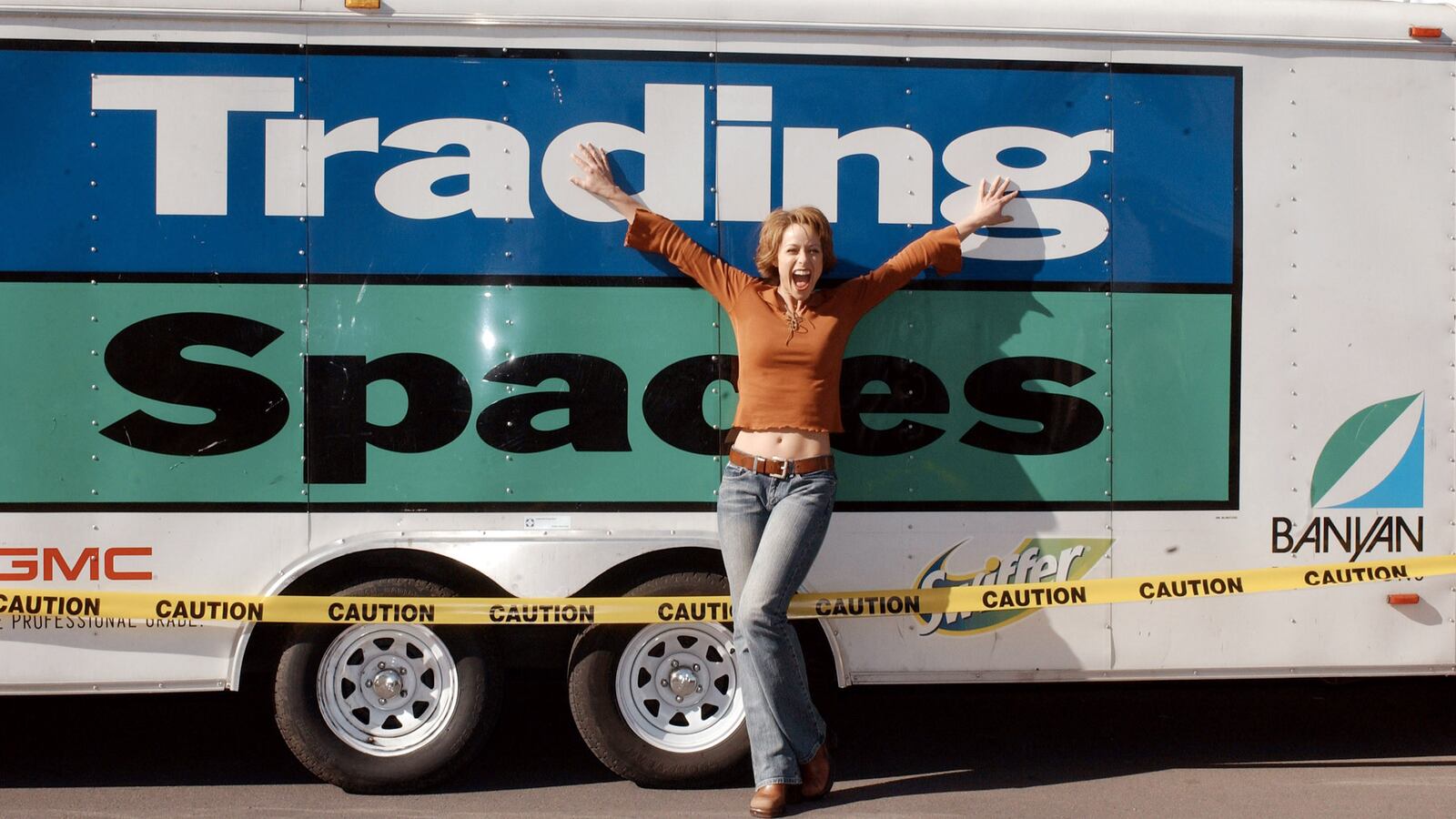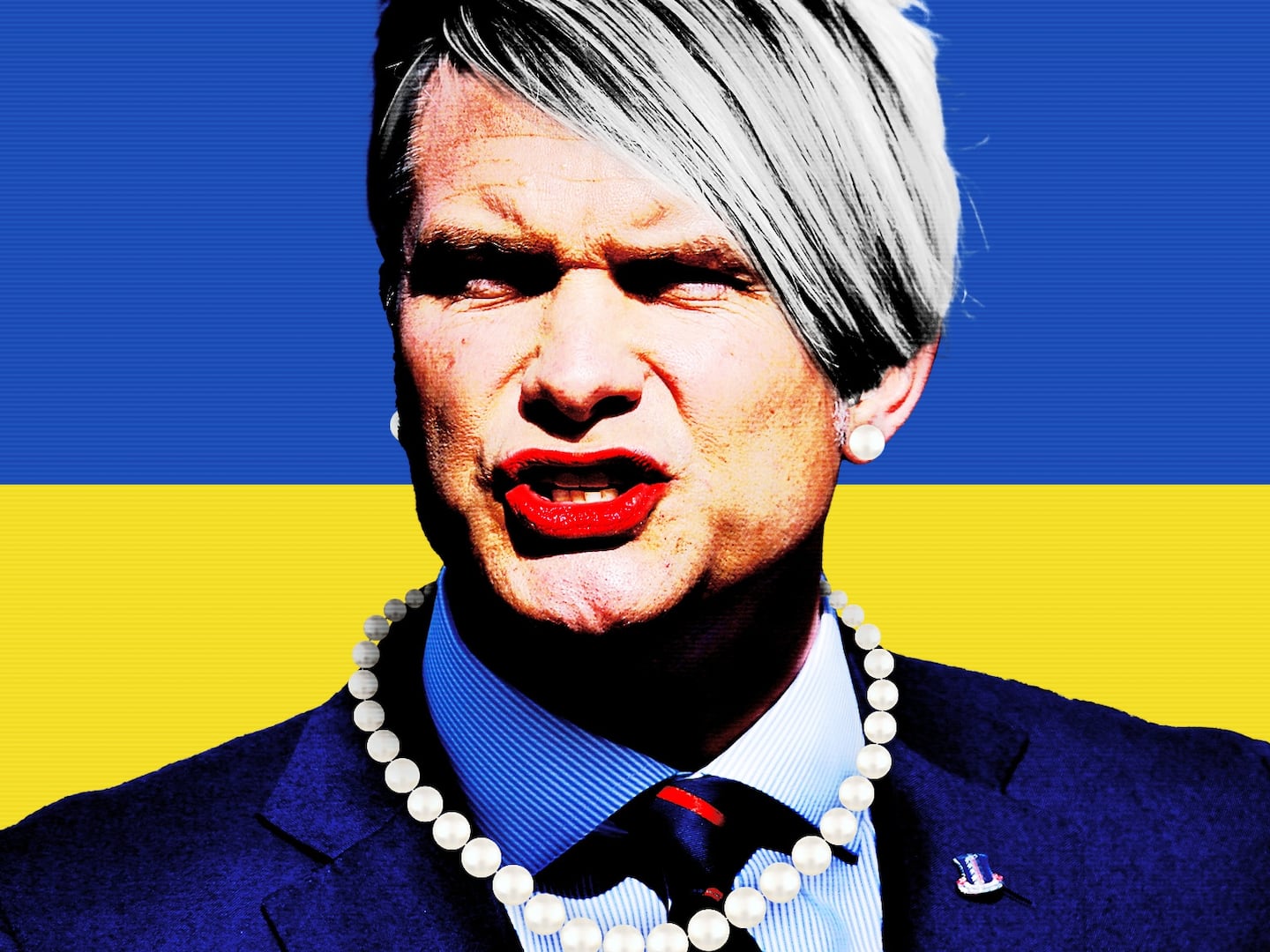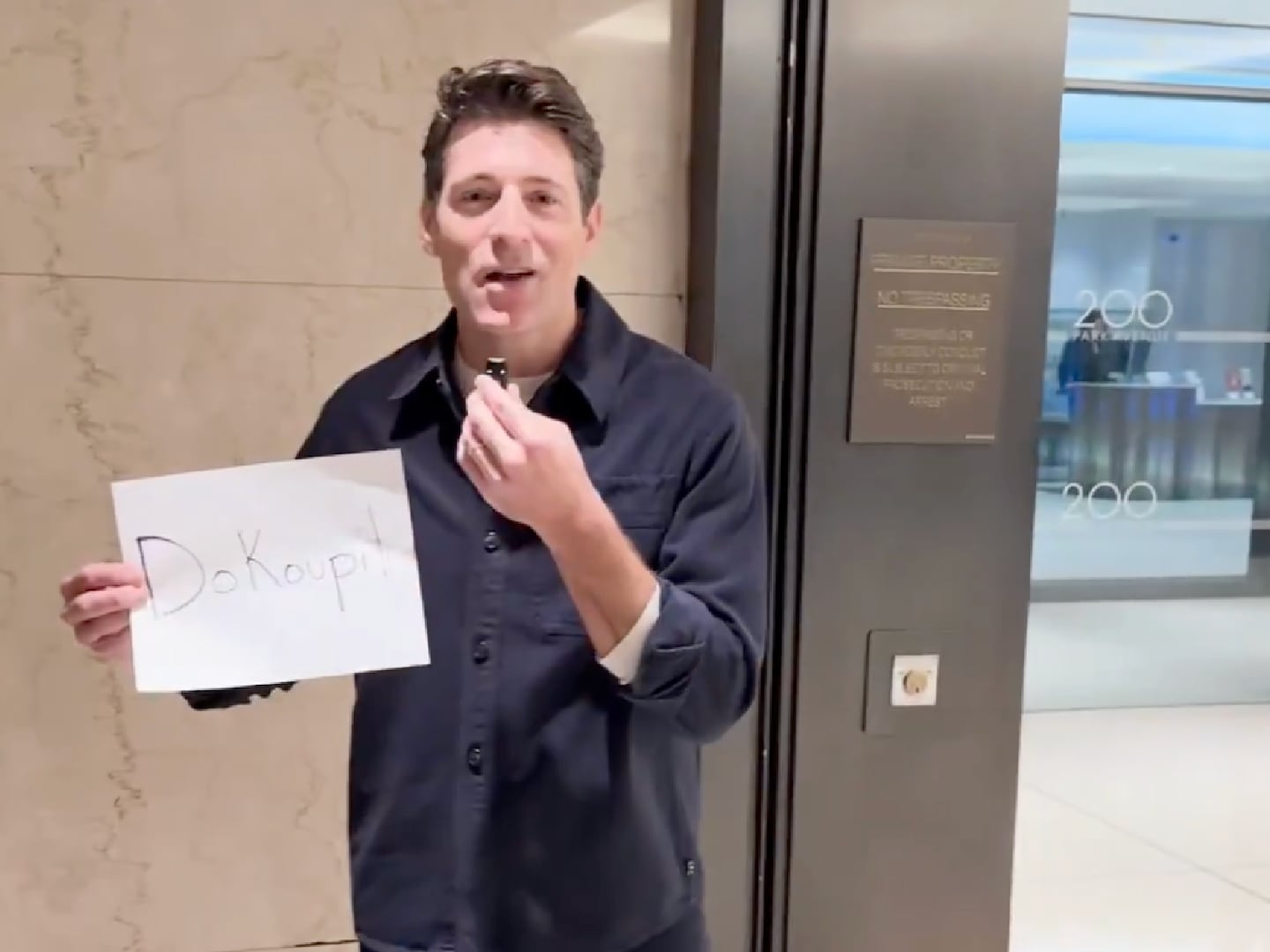There are TV moments which we all remember where we were, what we were doing, how we felt when we watched: the moon landing, the Miracle on Ice, “who shot J.R.?,” the O.J. Simpson Bronco chase. And when Pam cried because Doug covered her fireplace with white wooden façade even though she asked him not to.
Eight words. It took eight words to make television history. Eight words to solidify one series as among the greatest of our time. With one tearful “I’m going to have to leave the room,” Trading Spaces became iconic. And from the ashes of that very fireplace Pam wept over, the TLC home improvement phenomenon rises again.
Ten years after it aired its last episode, Trading Spaces is the latest in a spate of early-millennium revivals (Jersey Shore just announced its comeback, for a clue to how desperate networks are to go back to a time when people actually watched their TV shows). Sweetening the blessed news is the fact that spritely Paige Davis will be back to cheerfully host—and occasionally console homeowners like Pam—when Trading Spaces returns in 2018.
We’ve been through a lot this year. Trading Spaces is comfort food from a sweeter, simpler time, when all we needed was a $1,000 and a wall of hay to laugh at in order to feel safe. Yes, Paige Davis is here to Make America Do the Best It Can on a Limited Budget and Kooky Designers Again.
If you’ve never seen Trading Spaces, first of all, you disgust me; second of all, here is a basic explanation of the series that—forget Mad Men, forget Breaking Bad, forget Game of Thrones—truly launched the Golden Age of Television as we know it.
Our collective lives changed forever on October 13, 2000, when TLC, in the midst of its rebrand from The Learning Channel to the bizarro reality haven we now know, gave birth to this demented little series, in which two couples who are friends literally trade houses for two days and, with the help of a batshit designer, a hunky carpenter (hello, young Ty Pennington), and occasionally some elbow grease from Dear Leader Paige Davis herself, transform a room in the other couple’s home.
You’d think it’s a formula for simple, jovial design-porn fun, but no, friends, this series was a drama of Shakespearean proportions. The betrayal. The cruelty. The twists. The fucking living room filled with sand.
There were heroes (bless you, Vern Yip), and villains (burn in hell, Hildi Santo-Tomas). There were clowns (cuddly little Weeble Wobble, Frank Bielec), and there were peasants, the poor souls who signed up for this deranged televised slaughtering of their homes, tragically ignorant that, in just 48 hours, their closest friends will have forsaken them and their living room furniture is about to be on the damn ceiling.
As you may have gathered, this show’s bread and butter was its out-of-its-mind renovations, spearheaded by this coven of sinister designers who all too often mistook “crafty” for “class.”
The good ones would reinvent your living room with some nice warm tones and a smattering of accent pillows—you know, to make the room “pop”—and who might actually listen to desperate pleas not to touch the sole item in the room that your family has cherished for generations. This was Vern Yip, Genevieve Gorder, and (usually) Laurie Smith.
Then there were the ones who, when a couple found out he or she would be designing their homes, were barely able to hide the single tear shed as their souls left their bodies. These are the ones who would turn your den into a circus tent you hallucinated once on an acid trip, and who would take that family heirloom you begged them not touch and decoupage it with mowed grass.
There were a few designers in this latter category. Doug Wilson landed himself there forever thanks to the time he made poor Pam leave the room because she was so inconsolable over her fireplace. But its biggest, and therefore greatest, offender is Hildi Santo-Tomas.
Once in a while I will be in a dark, damp basement at night and feel a cold draft on my back. “It’s me,” I’ll hear whispered, and there is Hildi Santo-Tomas standing, clutching a bag of wigs she plans to hang from the ceiling of my living room. Then I wake up in a cold sweat and realize it was just a bad dream.
Here is a list of actual things Hildi did to actual rooms that she expected actual people to actually live in: She poured sand on the floor of a family’s living room to create an “oasis,” swapping out their comfortable couch for beach chairs. She glued straw on the walls of a house with young children, and plastered the ceiling with pink stucco. She stapled 7,000 silk flowers to the walls of a bathroom. She hung furniture upside-down on the ceiling of a living room and painted the walls black.
She was a monster. And she was the greatest thing to happen to reality television, perhaps ever. If there is such a thing as reparations for this hell we’ve lived in the first half of 2017, she will be back when Trading Spaces returns.
The show was once one of the most popular series on TV and the crown jewel of TLC’s lineup, though it wasn’t a massive success out the gate and its glory burned as fast as it did bright. (Katie Dries penned a masterful write-up of its rise and fall for Jezebel in 2015.)
It had an undeniable influence on TV as we know it today, in which home design shows are so plentiful and popular that people are able to debate which version of House Hunters they prefer. The one-time dominance of Extreme Makeover: Home Edition is directly owed to Trading Spaces, and certainly HGTV as we know it now, a never-ending onslaught of gimmick-heavy home improvement shows fronted by the nation’s most chipper carpenters, wouldn’t exist without it.
The fatal flaw of so many of TV show revivals is the instinct to “update,” which in turn causes producers and networks to lose sight of what made their series appealing in the first place—thus losing the audience supposedly excited for its return, too. Bringing back Paige Davis is, at least, a sign that next year’s Trading Spaces revival might take the “if ain’t broke…” approach to the new series.
Davis is the human manifestation of the word spunk. “Gee, that girl’s got moxie!” is a thing you might have said about Paige Davis if both you and her were alive in the 1920s. (FUN FACT: Paige Davis played Babette the feather duster in the Broadway musical Beauty and the Beast, and Roxie Hart in the revival of Chicago.)
But her real gift was manning the last 10 minutes of each Trading Spaces episode, when homeowners held onto her for dear life when it was time for the reveals and she instantly was forced to assume the role of party-starter or therapist when couples were either over the moon with their renovations or recoiled in disgust.
We can’t wait for it all.






